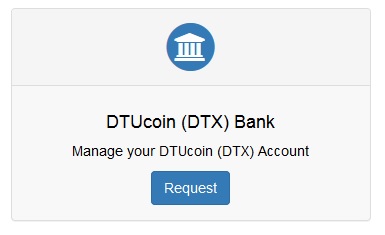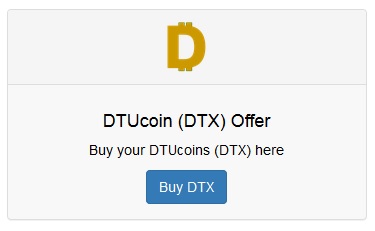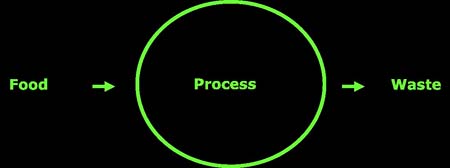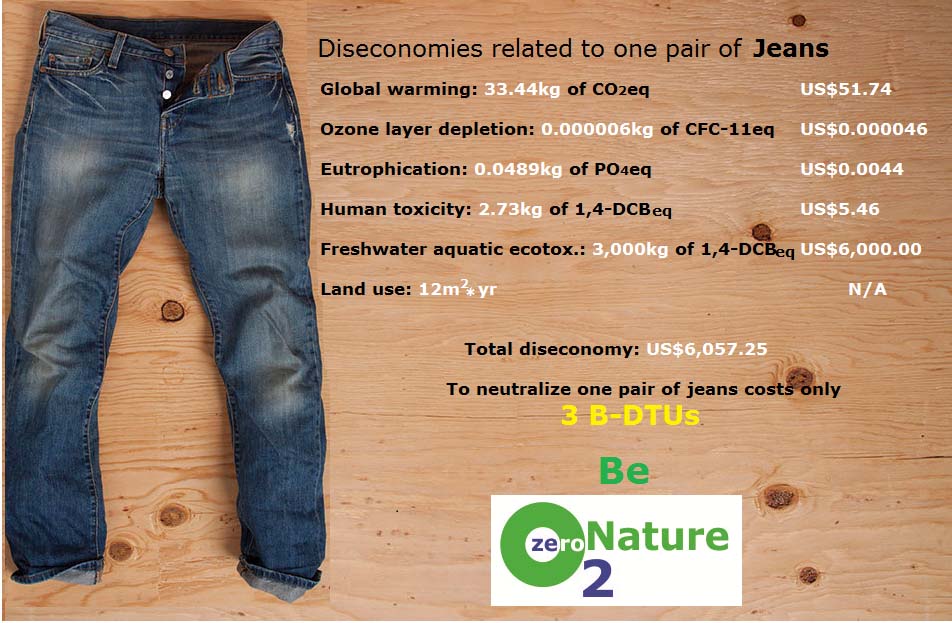DTX Purchase Instructions
- 1 Register a ZerO2Nature user account
- 2 Go to the Control Panel and create a DTX Account

- 3 Go back to the Control Panel and make your DTX order

-
1/. What is a productive cycle?
2/. What are negative emissions?
3/. What is neutralization?
4/. What are diseconomies?
5/. What are DTUs?
6/. What are DTUcoins (DTX)?
7/. What's the difference between a DTU and a DTUcoin (DTX)?
8/. How are DTUs used?
9/. How are DTUcoins (DTX) used?
10/. Why would I buy DTUcoins (DTX) instead of carbon credits?
11/. Is a DTUcoin (DTX) considered a commodity?
12/. Why should I buy DTUcoins (DTX)?
13/. What is PREBIO?
14/. What is PREFOR?
15/. What is PRECARB?
16/. What is PREMIN?
17/. What is PREHYDRO?
18/. What is PRONER?
1/. What is a productive cycle?
Usually, a productive cycle is defined as an economic concept that describes the production of a good. In reality, the entire circuit that envolves an entry point, a process and an exit can be considered as a productive cycle:

Anthropic productive cycles are those produced by human beings and as a rule always produces waste.
2/. What are negative emissions?
It is very common to hear that negative emisssions are the same as pollution. This incorrect piece of information drastically alters the notion of productive cycles.
In reality, pollution is all that which Nature cannot absorve during a period of time. For example, we can afirm that the Pinheiros River which passes through the city of São Paulo, Brazil is polluted, since its waters are completely saturated with waste, including an enormous quantity of sewage which the flow cannot absorb. Nevertheless, the entire sewer system of the northern brazilian city of Belém (population of 1.5 MM) is thrown into the Guamá River and yet the river is absolutely clean. The explanation is that all the organic material deposited directly into the river, enters a natural cycle of absorption and so does not cause pollution. Therefore, in this case, the negative emissions are naturally neutralized.
3/. What is neutralization (offset)?
Neutralization is a productive process that can occur in two forms: spontaneously, when Nature, in its intrinsic course "digests" the waste of a productive cycle or anthropically, when a person takes effective measures to remove or compensate negative emissions.
For example, a common manufacturer of jeans that assesses the negative emissions of his productive cycle will reach a diseconomy of circa US$6 thousand per pair. These diseconomies are divided in the following way:

Let's suppose that the manufacturer wants to offset only the emissions related to global warming: in this case, with 33 Milli-F-DTUs he would neutralize the emissions caused by one pair of jeans. In taking a sole pair of jeans, the neutralization of emissions related to the ozone layer and euthrophization are negligible; however, if the manufacturer is interested in neutralizing the entire production, during one year, these scenarios start taking on importance. Therefore, there are various ways for a company to reduce, remove or neutralize emissions from an anthropic productive cycle and communicate this to the end consumer.
The creation of value is the final objective of all human productive cycles and ever since Adam Smith, the concepts of economy and diseconomy coexist. Nevertheless, while an economic value is easily established, as being a direct product of the costs involved in its creation, diseconomies, or the environmental cost caused by an anthropic productive cycle, are never effectively monetized. With the adoption of scenarios and associated reference values, the ZerO2Nature system puts a full stop to this impossibility, unveiling –definitively- the diseconomies market.
Diseconomy Traded Units (DTUs) are ecological credits originated in projects that apply the ZerO2Nature Standard and operate under the following types: B-DTU (PREBIO type projects), F-DTU (PREFOR type projects), H-DTU (PREHYDRO type projects), C-DTU (PRECARB type projects), M-DTU (PREMIN type projects), N-DTU (PRONER type projects).
DTUcoins (DTX) are digital assets that represent a certain amount of reduced, removed or mitigated environmental liability.
7/. What's the difference between a DTU and a DTUcoin (DTX)?
DTUs reflect the scientific and technical aspect of the ecological credit generation, characterizing the origination phase of the ZerO2Nature process.
DTUcoins (DTX) are derived from DTUs through a conversion rate and are used as:
a/. a form of exchange;
b/. a reserve value;
c/. a market reference
Complementing its charcteristic of a quasi-money, DTUcoins (DTX) are divisible (Milli-DTUcoins) and possess relative scarcity (the market is regulated through a balance between DTUcoins (DTX) that enter the trade circuit and those that are retired).
DTUs may be used by companies that are for example, implementing an optimization program (pollution reduction) within its productive cycles. In order to offset their own negative emissions, companies may request the retirement of DTUs directly to the ZerO2Nature system.
9/. How are DTUcoins (DTX) used?
By taking on the properties of a market instrument, DTUcoins (DTX) have several applications:
a/. They may be acquired by the industry, commerce or any other type of productive cycle for the purpose of retirement and consequent neutralization of negative anthropic emissions;
b/. They may be utilized as a means of exchange;
c/. They may be characterized as a reserve of value;
d/. They may be utilized as a vote, permitting the final consumer to base their purchasing options on products holding a specific certification seal, such as that offered by ZerO2Nature;
10/. Why would I buy DTUcoins (DTX) instead of carbon credits?
Primarily, due to the heavy blow suffered by the carbon credit market when the targets for the second period of the Kyoto Protocol weren’t established. Furthermore, because while carbon credits are associated with the infinite polemic around climate change, DTUcoins (DTX) are tied to a physical base and represent the effective removal of a measured volume of anthropic negative emissions.
11/. Is a DTUcoin (DTX) considered a commodity?
No. What characterizes a commodity is the confidence level attributed by the market in the long term. Since a DTUcoin (DTX) is tied to a physical base, has the capacity to monetize diseconomies and works to effectively remove measured volumes of “pollution”, it has all the requirements to become a commodity in the future.
12/. Why should I buy DTUcoins (DTX)?
Currently, diseconomies produced by all the anthropic productive cycles of our planet correspond to US$50 trillion per year. Concomitantly, the level of demand by the end consumer with respect to the environmental responsibility of the productive chain is ever increasing.
The demand for DTUcoins (DTX) is driven by end consumer (individuals) purchase, productive cycle (company) neutralization and financial market (traders) involvement.
PREBIO is a type of project that preserves or recovers biodiversity. A PREBIO project proponent that obtains issued B-DTUs may offer them on the ZerO2Nature trade platform as DTUcoins, at the appropriate conversion rate.
PREFOR is a type of project that preserves or recovers forests. A PREFOR project proponent that obtains issued F-DTUs may offer them on the ZerO2Nature trade platform as DTUcoins, at the appropriate conversion rate.
PRECARB is a type of project that preserves or recovers hydrocarbon reserves, like oil, natural gas and coal. A PRECARB project proponent that obtains issued C-DTUs may offer them on the ZerO2Nature trade platform as DTUcoins, at the appropriate conversion rate.
PREMIN is a type of project that preserves or recovers mineral reserves (ore deposits). A PREMIN project proponent that obtains issued M-DTUs may offer them on the ZerO2Nature trade platform as DTUcoins, at the appropriate conversion rate.
PREHYDRO is a type of project that preserves or recovers water reserves. A PREHYDRO project proponent that obtains issued H-DTUs may offer them on the ZerO2Nature trade platform as DTUcoins, at the appropriate conversion rate.
PRONER is a type of project that results in the removal of negative anthropic emissions from a productive cycle. A PRONER project proponent that obtains issued N-DTUs may offer them on the ZerO2Nature trade platform as DTUcoins, at the appropriate conversion rate.